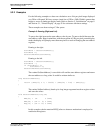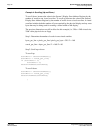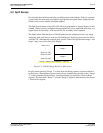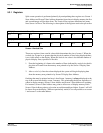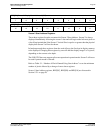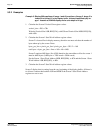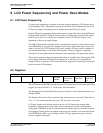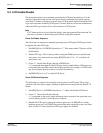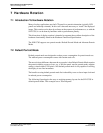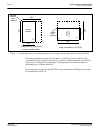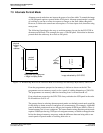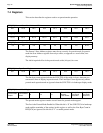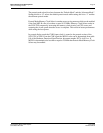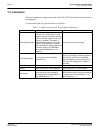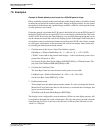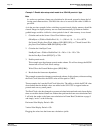
Epson Research and Development Page 37
Vancouver Design Center
Programming Notes and Examples S1D13705
Issue Date: 02/01/22 X27A-G-002-03
7 Hardware Rotation
7.1 Introduction To Hardware Rotation
Many of todays applications use the LCD panel in a portrait orientation (typically LCD
panels are landscape oriented). In this case it becomes necessary to “rotate” the displayed
image. This rotation can be done by software at the expense of performance or, as with the
S1D13705, it can be done by hardware with no performance penalty.
This discussion of display rotation is intended to augment the excellent description of the
hardware functionality found in the Hardware Functional Specification.
The S1D13705 supports two portrait modes: Default Portrait Mode and Alternate Portrait
Mode.
7.2 Default Portrait Mode
Default portrait mode was designed to reduce power consumption for portrait mode use.
The reduced power consumption comes with certain trade offs.
The most obvious difference between the two modes is that Default Portrait Mode requires
the portrait width be a power of two, e.g. a 240-line panel, used in portrait mode, requires
setting a virtual width of 256 pixels. Also default portrait mode is only capable of scrolling
the display in two line increments.
The benefits to using default portrait mode lies in the ability to use a slower input clock and
in reduced power consumption.
The following figure depicts the ways to envision memory layouts for the S1D13705 in
default portrait mode. This example uses a 320x240 panel.



